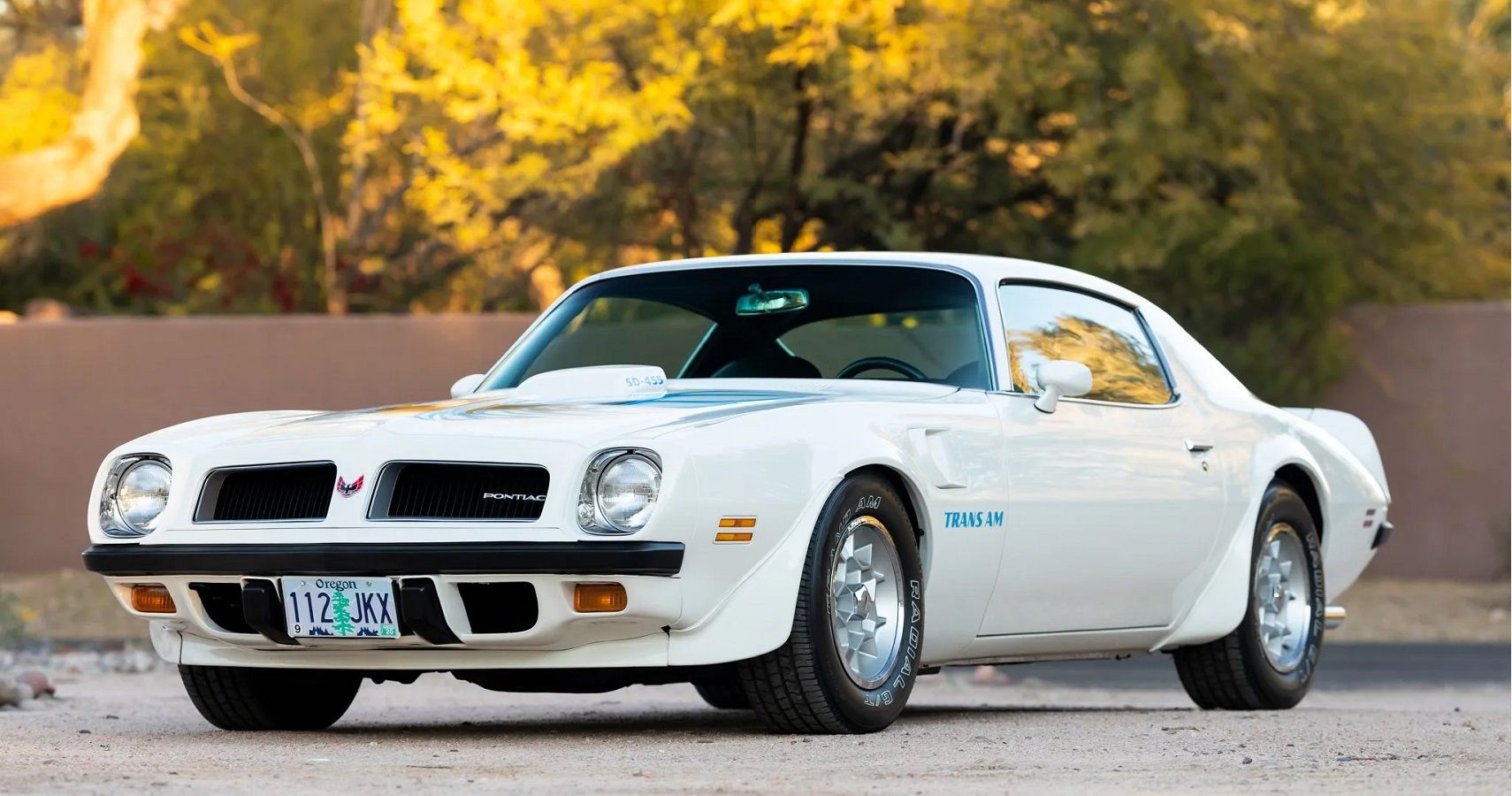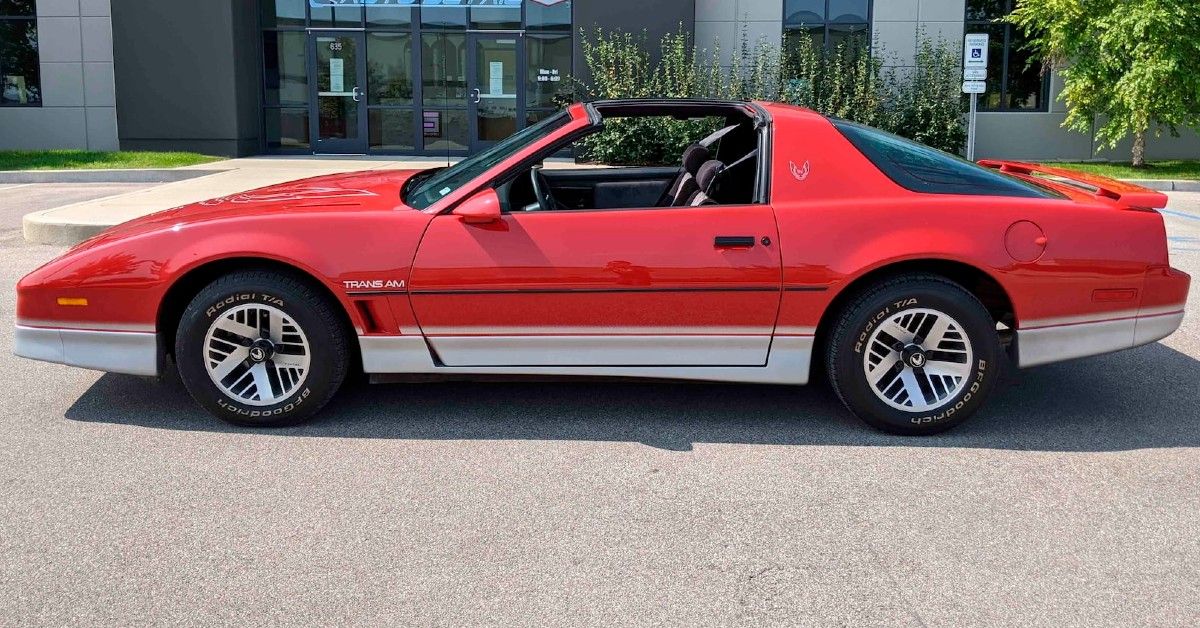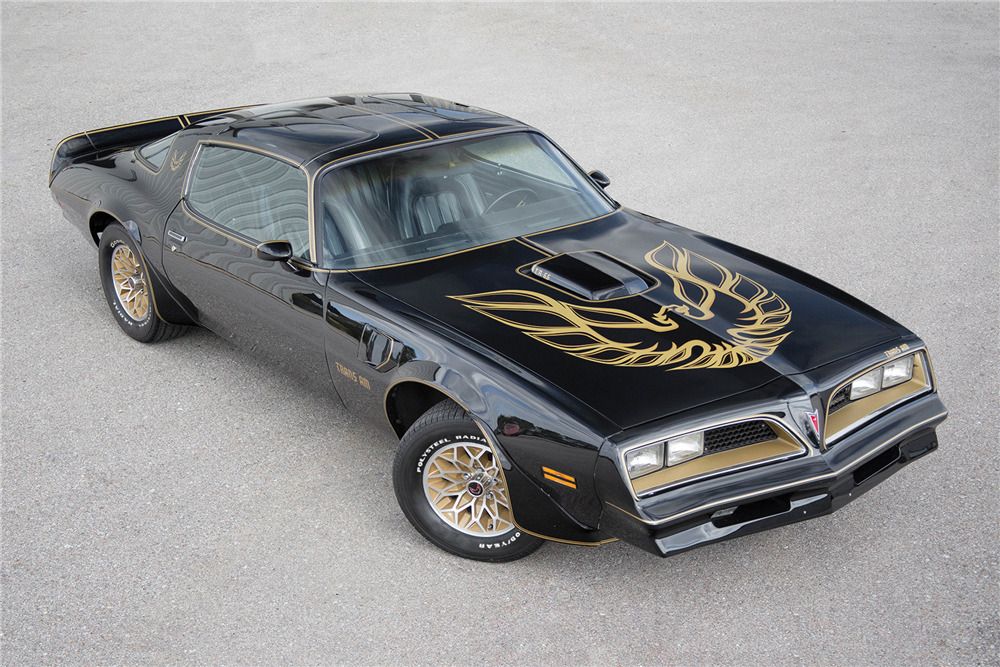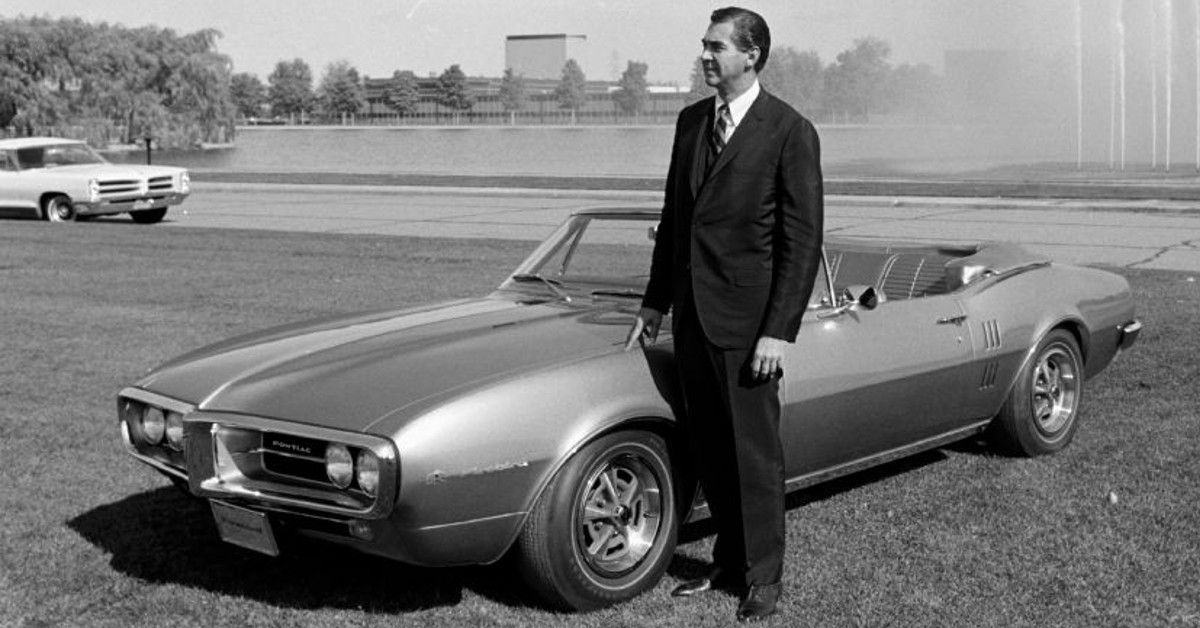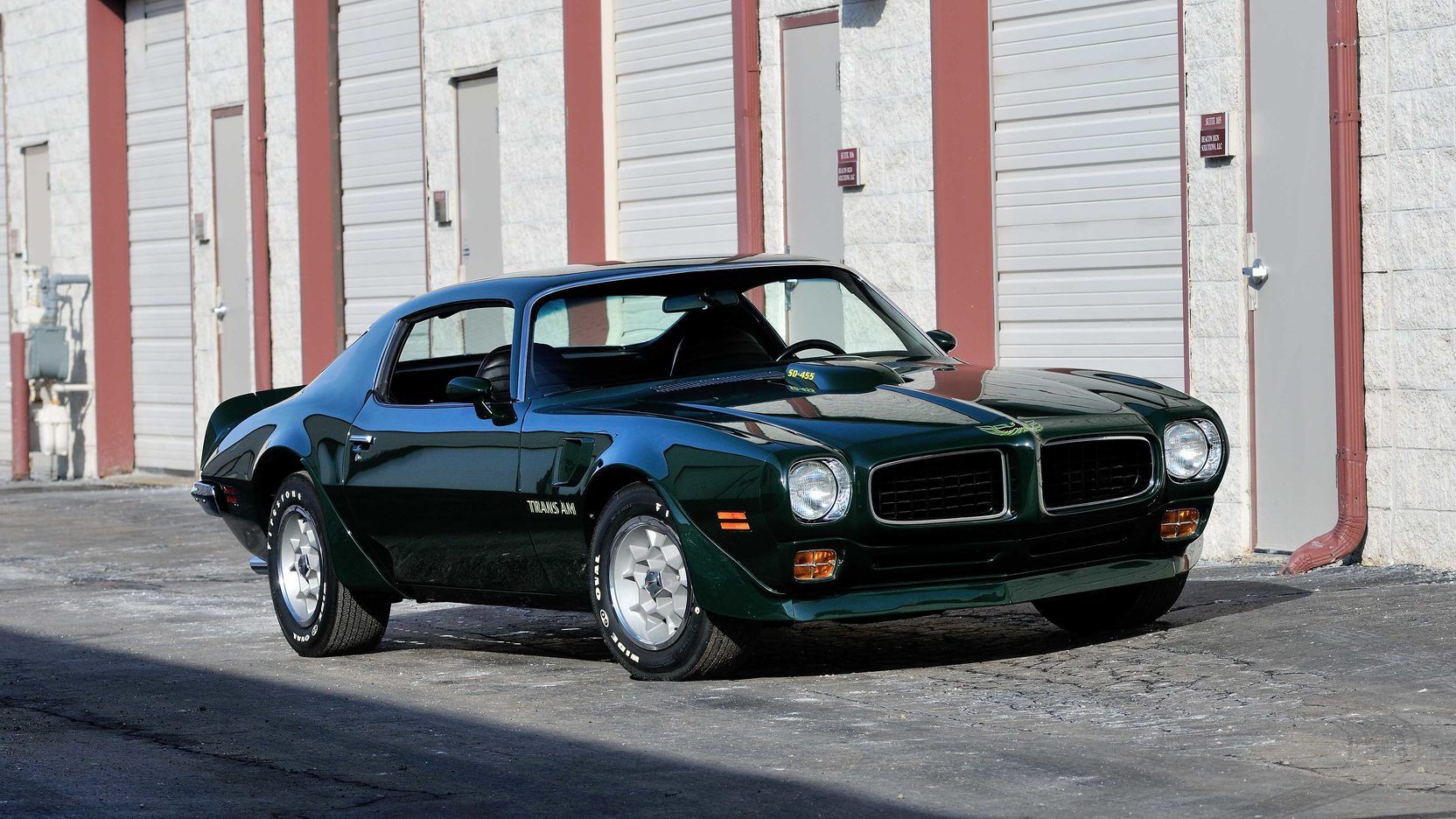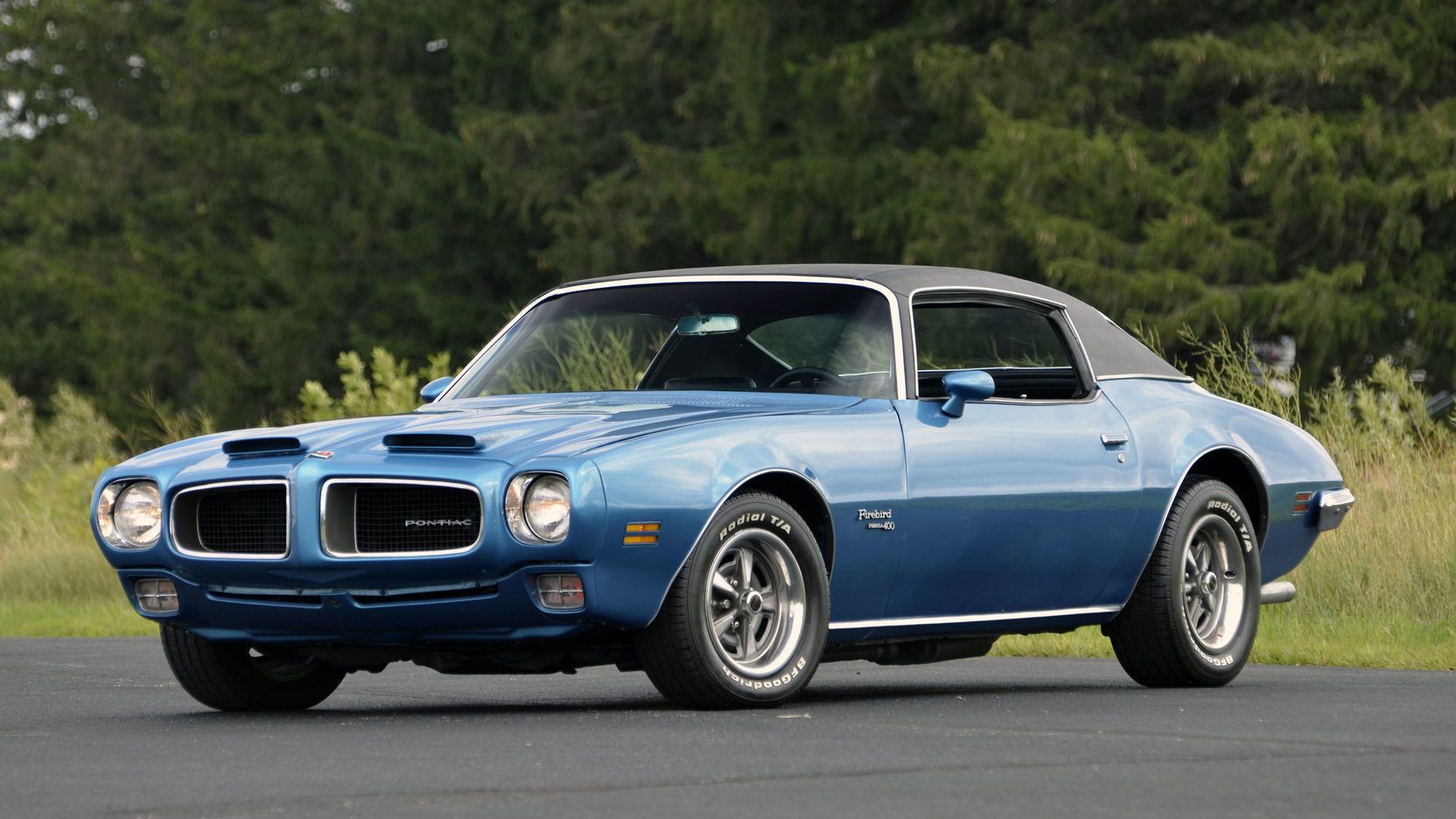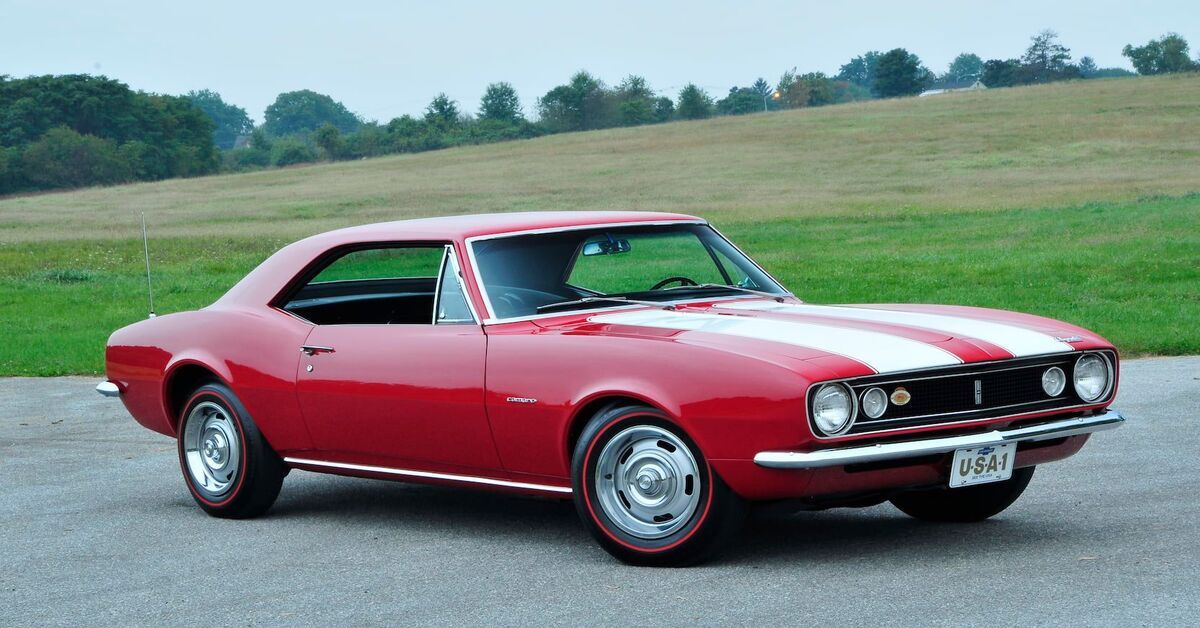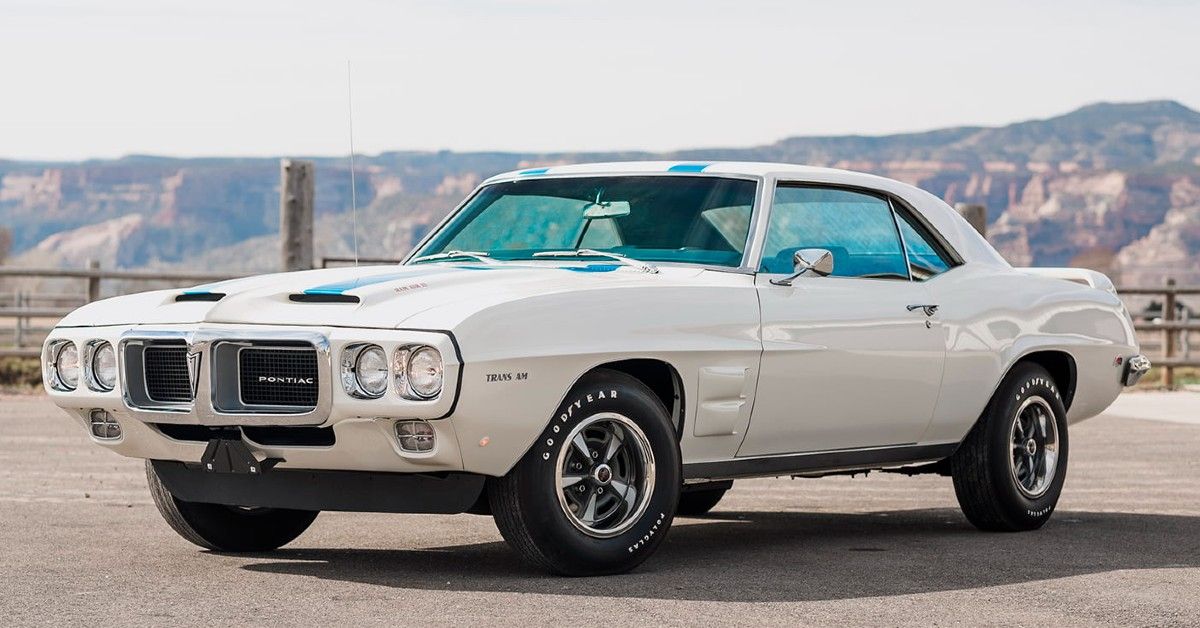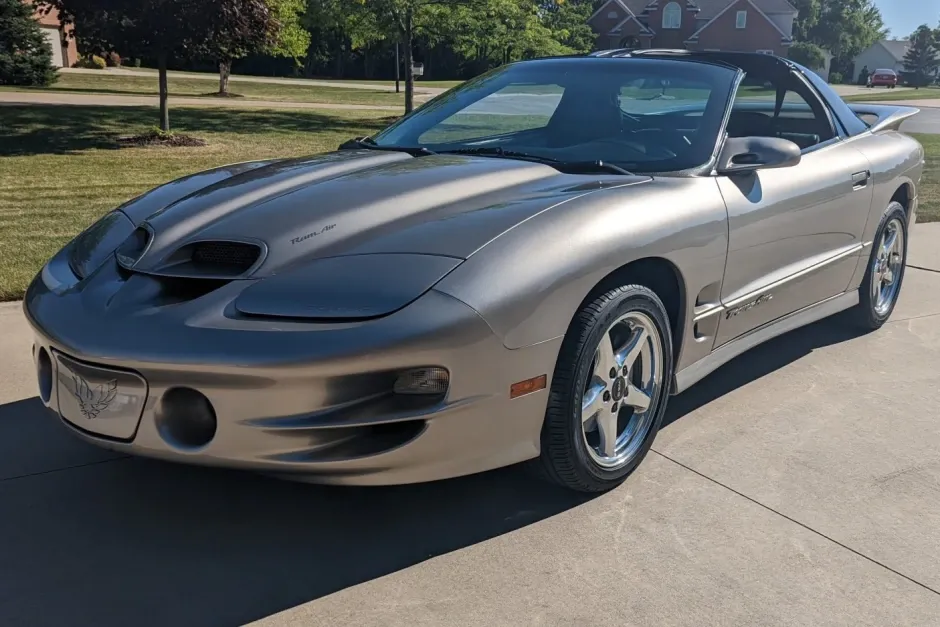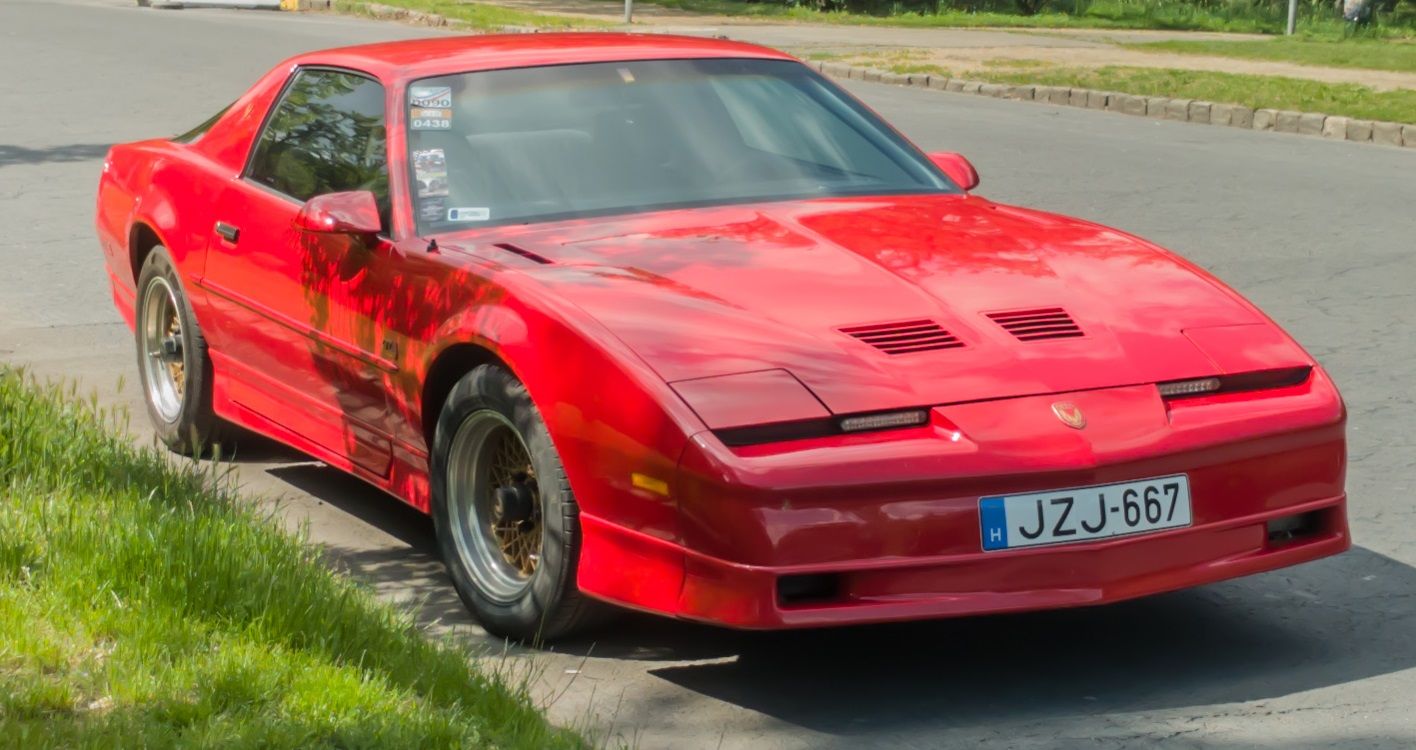Named after the American racing series it failed to qualify for, the Pontiac Firebird Trans Am is the wacky brother to the Chevrolet Camaro. Arriving in 1969, Pontiac dethroned their very own GTO with the Firebird Trans Am package. Pontiac's Firebird Trans Am went on to see four generations until 2002, becoming a muscle car favorite among enthusiasts.
The rarest of all Trans Am models is the 1969 Trans Am Ram Air IV, seeing only 55 units produced for the 1969 model year. A recent sale in 2022 cost the new owner $350,000. The Trans Am ascended from the muscle car golden era and withstood the slow and steady malaise era of the mid-seventies. Here's why the Pontiac Firebird Trans Am is an iconic American muscle car.
10 The Pontiac Firebird Trans Am Giant Screaming Chicken Decal
Designed by Norm Inouye in 1970, the 'Giant Firebird Hood Decal' was postponed until 1973 by legendary designer Bill Mitchell due to its appalling size. However, many would argue the Trans Am 'screaming chicken' alone deserves a comeback, never mind the legendary Pontiac nameplate.
Bill was not alone, as the head honchos at GM were also put off by the garishly large 'Screaming Chicken' emblem. Luckily for Norm Inouye, Pontiac General Manager Jim McDonald pulled the trigger on the decal for the 1973 model year as a $55 option under code WW7.
And thank goodness he did – fans quickly labeled it the 'Giant Screaming Chicken' while purists opted for the more elegant 'Firebird' emblem. The Pontiac Firebird Trans Am wore the symbol until 1981, with a few brief returns in 1985-1987.
9 The Pontiac Firebird Trans Am Featured A T-Top
By the '70s, convertibles were scarce in North American showrooms thanks to developments in air-conditioning and tightened safety regulations. However, thanks to the Pontiac Firebird Trans Am and the timeless C3 Corvette, General Motors has consistently been credited with the advent of the T-top.
Contrary to popular belief, T-tops were invented and patented by car designer Gordon Buehrig and applied to his Tasco prototype in 1948. While the budding sports car company failed, the T-top lived on. Buehrig successfully sued GM in 1968 for using his technology on the Chevrolet Corvette.
Legal issues aside, Pontiac carried on where the C3 Corvette left off in 1976, equipping the mid-year special edition Firebird Trans Am with T-top removable panels from Hurst performance. The legendary black and gold Y82 package saw 643 of 2,590 Trans Am models receive the T-top configuration, and today the Y82 is one of many T-top classics that are worth a boat-load of cash. Fisher replaced Hurst in 1978 as Pontiac's T-top supplier due to leakage issues from the Hurst performance setup.
8 The Pontiac Firebird Trans Am Starred In Smokey And The Bandit
Of course! The Pontiac Firebird Trans Am's most iconic feature was at the hands of Burt Reynolds in the 1977 box-office hit, Smokey and the Bandit.
Despite the 6.6-liter sticker on the hood referring back to the original 300 hp Firebirds from 1969, the Bandit's Trans Am came armed with an emissions-friendly power plant, a 4.7-liter V8 producing 203 hp and 330 lb-ft of torque – it was the '70s after all.
Four Y82 special edition Firebird Trans Am models made it to set wearing the 1977 face, despite being 1976 models. Unfortunately, only one of the hero cars remains today and sold for $495,000 at auction in 2022.
7 John DeLorean Wasn't Sold On The Pontiac Firebird Trans Am
Pontiac General manager John DeLorean was dreaming of the future when the Firebird Trans Am project landed on his desk. But, preferring the Banshee sports car prototype, DeLorean lacked interest and instructed engineers to “make a better Z/28 Camaro” from the GM F-body platform.
Although lacking interest initially, DeLorean named the Trans Am package after the American racing series, which led to him paying the SCCA $5 in royalties for every Pontiac Firebird Trans Am sold. In addition, DeLorean's cavalier relationship with Chief Engineer Bill Collins allowed the project to flourish away from GM's bureaucratic nature.
6 The Pontiac Firebird Trans Am Multiple Engines
The Firebird Trans Am ran for four generations, with many power plants crammed beneath its bulging hood. GM was open with engine options on the second-gen Pontiac Firebird Trans Am, loading it with offerings from Chevrolet, Oldsmobile, and Buick.
You should consider a second-gen Trans Am for many reasons, most notably the legendary power plants lurking within, such as the Oldsmobile 6.6-liter V8 and the Chevrolet 5.7-liter. Even the Buick 3.8-liter turbocharged V6 appeared on the third-gen Firebird as Pontiac helped revive the muscle cars, post-malaise era.
5 The 4.9-Liter V8 Pontiac Firebird Trans Am
Speaking of engines, 1979 saw Pontiac drop the 6.6-liter V8 from its lineup due to tightening emissions regulations, opting instead for the 4.9-liter V8 introduced in 1977. Unlike the naturally aspirated variant of 1977/78, Pontiac reinforced the block with uprated pistons and gaskets while strapping a Garrett TBO 305 turbocharger capable of 9 psi of boost.
The results were astronomical, as the original engine went from a malaise-friendly 140 hp to a far more suitable 210 hp and 345 lb-ft of torque. Furthermore, the turbocharged Pontiac Firebird Trans Am and Formula models now arrived with more poke than the preferred Chevrolet Camaro Z/28, which came with a lumpy 190 hp from its 5.7-liter V8 from Chevrolet.
4 Is The Pontiac Firebird Trans Am A Camaro?
GM developed the F-body platform for its pony cars in response to Ford after the astonishingly successful Ford Mustang and later Mercury Cougar models. The debut vehicle was the 1967 Chevrolet Camaro, which sat upon the F-body platform. Pontiac inherited the F-body for its Firebird pony car as the Camaro's alternative brother.
The Pontiac Firebird Trans Am and Chevrolet Camaro shared all four generations of the F-body platform between 1967 and 2002. Upon the Firebird's retirement in 2002, the Chevrolet fifth-gen Camaro arrived in 2010 upon the 'Zeta chassis' with a VIN code 'F', likely in homage to the F-body platform. Sadly, Pontiac was retired to the history books in 2009, leaving the Camaro to go it alone as GM's flagship pony car.
3 The 1969 Pontiac Firebird Trans Am Ram Air IV
The Pontiac Ram Air IV sits within muscle car royalty, with its 6.6-liter V8 producing 345 hp and 430 lb-ft of torque. Thanks to its rounded port heads and revised intake ports, the Ram Air IV was 10 hp better off than its Ram Air III counterpart. And let's not forget it's a drag car, setting a quarter-mile time of 14 seconds way back in 1969!
Trans Am packaged Pontiac Firebirds arrived in 1969 exclusively with heritage American racing colors, Cameo white with two Tyrol blue stripes running through the center. Models post-1970 featured a brighter 'Polar White' color code.
Only 55 Pontiac Firebird Trans Am Ram Air IVs were built, nine of which arrived with the three-speed automatic transmission.
2 The Pontiac Firebird Trans Am WS6
Pontiac ran the WSX package on the Firebird Trans Am between 1978-1992. A brief six-year hiatus saw it return in its most iconic form. The 1996 Pontiac Firebird Trans Am WS6 arrived with a set of nostrils its Ram Air forefathers would be proud of, helping the '90s fourth-gen pump out 305 hp.
Furthermore, 1998 saw a reworked version of the C4 Corvette's legendary LS engine crammed into the WS6, known as the "LS1". Finally, post-1998 Pontiac Firebird Trans Am WS6 models sent 320 hp to the rear wheels as the Firebird took its last stand in 2002.
1 The Pontiac Firebird Trans Am GTA That Reached 267 MPH
The Banks Firebird Trans Am is one of many forgotten memories associated with the Firebird. In 1986, Gale Banks Engineering armed their Firebird Trans Am with a 7.5-liter twin-turbocharged big-block from GM. This horror could develop around 1,500 hp, while the Banks turbochargers provided 22 psi of boost.
Unsurprisingly, the Banks Pontiac Firebird Trans Am GTA held the passenger car speed record from 1986-1996, recording an astonishing top speed of 267 mph on the Bonneville salt flats.
Sources: Barrett-Jackson

